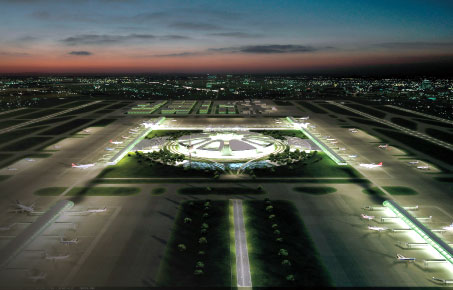
K+P conducted the long-term development study, airport master plan and terminal design at Hangzhou International Airport. Beside the creation of optimal airport geometry landside and airside, the creation of a symbolic architectural form was of vital importance in one of China’s most attractive tourist locations, where prolific growth is being experienced.
“If I am travelling to a new city or country for the first time, first impressions are the most important. Airports and especially airport buildings are like the business cards of a city or a country,” said Norbert Koch, Managing Partner of K+P Architekten and Stadtplaner. “Coming into a well-lit, spacious and comfortable airport building, with a friendly atmosphere, light colours and space to breathe; finding my destinations easily because of good orientation; professional and customer-friendly services and everything happening in a ‘stress-free’ manner is the perfect way to go positively into a new place!”
While the implementation of innovative technologies such as self-check-in solutions, self-boarding gates and ‘easy pass’ facilities at passport control is streamlining passenger processes at K+P’s projects, the architect capitalises upon an airport’s unique culture, its 40 years of experience, and a team of architects with unmatchable talent, to create an airport experience that passengers will remember. Passenger flow and enhanced capacity is enabled through the generation of common-sense orientation and easily understandable signage concepts, and harmonious colour and lighting concepts, centralised airport buildings with logical passenger distribution and aesthetically pleasing surroundings bring about an environment in which passengers want to be.
Among other architectural and planning projects K+P has assembled an accomplished airport portfolio. The German expert created the “perfect” hub at Urumqi International Airport. K+P is also behind significant developments at Munich Airport, where it planned the entire development of a central terminal hall, pier structure, central parking block and baggage sorting hall for its Terminal 2.

As well as the development of Munich Airport’s new Terminal 2, K+P was responsible for the conversion and extension of the terminal, in which an extra floor was added to the pier building between 2007 and 2009. Recently K+P has also commenced plans for Munich Airport’s new Satellite facility, the construction of which recently began during airport operations.
Following successful master planning studies for Douala International and Yaoundé-Nsimalen International airports in Cameroon, K+P’s present enterprise is the revision of the land and airside land-use planning study at Sir Seretse Khama International Airport.







